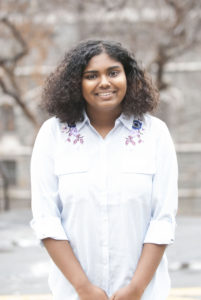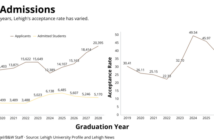In the 1960s and ’70s, many musicians — including Bob Dylan, the Beatles, Sam Cooke and Jimi Hendrix among others — created songs in response to the civil rights movement and the Vietnam War.

Emily Thampoe
The art of protest songs, while a well-aged tradition, is still alive and well today.
There is value in using a highly popular art form that has the ability to reach so many people, especially to address issues that affect a wide majority.
In 1999, the Columbine massacre was a tragedy that inspired anguish, sympathy and empathy for the students and families affected. The aftermath of the massacre was highly covered in the press, as the community and the nation grieved.
This event started a conversation about safety precautions in schools. Following this, some institutions implemented metal detectors and a larger amount of security personnel.
It also started the dialogue regarding gun laws, which our nation is currently engaged in.
Over the years, there have been gun-related tragedies not only within the United States, but on an international scale. These tragedies have occurred in environments that people should otherwise feel safe in.
From the Route 91 Harvest music festival in Las Vegas to Pulse Nightclub in Orlando to more schools — including the most recent, Marjory Stoneman Douglas High School in Parkland, Florida — one thing is for certain: action must be taken to ensure safety.
In the wake of these tragedies — events that have become an unfortunate staple in American culture — there has been a desire to provoke and promote change. There have been a multitude of musical tributes, speeches given to grieving families, groups lobbying for gun law reform and organized protest marches like the March for Our Lives on March 24.
These mediums of expression all show the need for change and action is urgent.
Just sending out our thoughts and prayers over social media, like many have done when tragedy after tragedy occur, is not enough.
In a 21st-century United States, there is still a need for peaceful protest as a catalyst for change.
Whether that be through the medium of music or impassioned speeches, something needs to be said.
Something needs to be done.
Released in 1996, Oasis’ Don’t Look Back In Anger is relevant today.
Following the bombing at Ariana Grande’s concert in May 2017 in Manchester, England, the song garnered a new significance.
Aside from the poignancy behind the band being from Manchester themselves, the song has a prominent message of speaking truth about power, despite the possibility of criticism.
Although the song has become significant in relation to the tragedies in Manchester, the message carries across the pond to our country.
Getting inspiration from the late John Lennon, who was a victim of gun violence and a prominent activist for peace during the Vietnam War, Noel Gallagher sings the line, “So I’ll start a revolution from my bed/‘Cause you said the brains I had went to my head.”
The song’s beginning chords have a stark resemblance to Lennon’s Imagine, so the message of finding peace through protest shines through.
The aforementioned lyric touches upon how activism does not have to happen in a monumental manner. It shows it can start anywhere and then grow through its progression. This lyric is extremely relevant now in relation to the survivors of the Parkland shooting.
Cameron Kasky, Emma Gonzalez, David Hogg and their fellow peers have become gun control activists and are all young people trying to lobby for change. They are doing this while combatting criticism from citizens and politicians alike, with one of the main reasons being their age.
When these brave and passionate individuals are speaking to politicians for action, they are truly, as Oasis sings, “stand(ing) up beside the fireplace.”
They are taking part in a turbulent national dialogue, and that is beyond remarkable.
That being said, these students are not alone in wanting this change.
I, along with my peers, professors, faculty and others, want #NeverAgain to be more of a reality. The possibility that someone’s safe place can be affected by violent chaos shouldn’t be a reality.
While much of this activism has come about because of anger and frustration, I hope for a future where the immense summation of these powerful emotions help ignite change in a positive direction.
And some of this change is occuring now.
So many universities have become “#NeverAgain” institutions, admissions offices have stated their universities’ prospective students will not be penalized for participating in instances of public protest, and students from all over the country have organized trips to the March for Our Lives in Washington D.C and made local iterations of the march.
Being a #NeverAgain institution involves universities upholding the spirit and message behind the campaign.
It is saying that gun violence is not strictly a Democratic or Republican issue.
It is about uniting like-minded people, no matter their personal political values, in the effort to make institutions into safer places that promote growth.
Work is being done and will continue on.
Day by day.
—
Em Thampoe, ’21, is an assistant news editor and columnist for The Brown and White. She can be reached [email protected].





Comment policy
Comments posted to The Brown and White website are reviewed by a moderator before being approved. Incendiary speech or harassing language, including comments targeted at individuals, may be deemed unacceptable and not published. Spam and other soliciting will also be declined.
The Brown and White also reserves the right to not publish entirely anonymous comments.